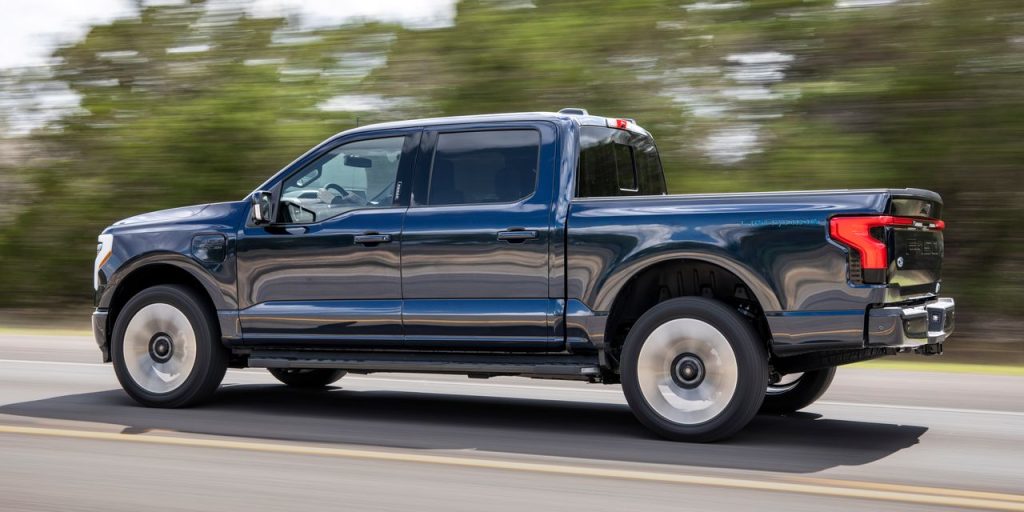Only 16 all-electric vehicle versions now qualify for a U.S. purchase tax credit, down from 24 model versions at the beginning of the year.
The Internal Revenue Service has issued an update on what electric vehicles qualify for what tax credits, as it promised it would on April 17.
Investors knew it was coming, but they didn’t know exactly which car makers would win out, or which vehicles would remain eligible. Prospective EV buyers can search for an EV model here.
The EVs that lost the credit are: the R1S and R1T from
Rivian Automotive
(ticker: RIVN); the Genesis GV70 from
Hyundai Motor
(005380. Korea); two versions of the
Nissan
(7201. Japan) Leaf; and six versions of the ID. 4 from
Volkswagen
(VOW3. Germany). One
Tesla
(TSLA) car lost its credit: The long-range version of the Model 3 isn’t listed anymore.
EVs that had credits cut to $3,750 from $7,500 include the E-Transit van from
Ford Motor
(F), two versions of the Mustang Mach E, and the rear-wheel-drive version of the Model 3 from
Tesla.
EV that qualify for the full $7,500 credit include all of the
General Motors
‘ (GM) models that originally qualified, including the Cadillac Lyriq, Chevy Bolt, Chevy Silverado, Chevy Blazer, and Chevy Equinox. Like Tesla, GM is in the enviable position of having its own battery-manufacturing capacity up and running.
Cars must be assembled in North America to qualify, but the amount of money available for buyers depends on where batteries come from and where battery materials are obtained.
Currently, 40% of an EV battery’s “critical minerals” must be from U.S. or a country with a U.S. free-trade agreement, including Japan. That goes up 10% a year and stays at 80% after 2027. At least 50% of the battery components of the vehicle must come from the U.S. or countries with a free-trade agreement with the US. That requirement also goes up by 10% a year and batteries need to be 100% from the U.S. after 2028 to keep that half of the EV tax credit.
Batteries and battery materials coming from an “entity of concern” will lose the credit starting in 2025. Currently, that would include materials from China.
Ford’s F-150 Lightning truck still qualifies for the full amount as long as the manufacturer’s suggested retail price is under $80,000. (That’s the price cap for all trucks and SUVs.)
Tesla has four versions that qualify for the full credit: the Model 3 performance version and three versions of the Model Y.
That’s the list of all the EVs that qualify for a credit. EVs such as the Hyundai Ioniq 5, the Polestar 2 and the Kia 6 didn’t qualify to start because they aren’t assembled in North America.
The credits cover plug-in hybrid models too. Ten vehicle versions qualified for some EV tax credit before the update. Now four qualify.
As the rules develop, the new EV tax credits actually cover fewer EVs than the credits that were in place in 2022. That seems counterintuitive. The Biden administration wants to increase EV sales. But Tesla didn’t qualify for the old credits. That means more of the EV market qualifies for a credit than did in 2022. Tesla accounted for roughly 65% of U.S. EV sales in 2022.
There is a lease loophole that still exists. EVs, even EVs not assembled in North America, that are leased can still qualify for $7,500 off, but that shows up in the form of lower monthly payments. It’s something car buyers should discuss with a dealer if they are buying an EV.
The EV stock that could have been hit hardest was Rivian, though the shares didn’t really react to the news Monday. The stock closed up 2.6% and was unchanged in after-hours trading. The
S&P 500
and
Nasdaq Composite
both rose 0.3%.
Rivian shares are down 1.4% in midday trading Tuesday, leaving the stock up about 16 cents, or a little more than 1%, for the week. Rivian didn’t respond to a request for comment about the credits.
Write to Al Root at allen.root@dowjones.com
Read the full article here




